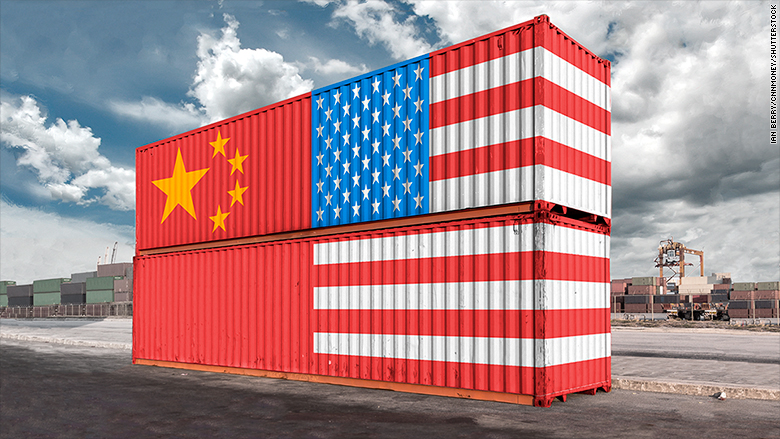
Just as neither party can win a trade war, a signed trade deal may not show a clear winner. Clearly, Sino-U.S. relations can no longer be what they were before. Yet, the phase one trade deal is of great constructive significance. Viewed beyond its direct impacts, the agreement plays three big roles in stopping the trade dispute from further souring bilateral trade relations.
Turning uncertainty into relative certainty
The protracted trade war between China and the United States has cooled down with the formal signing of their phase one trade agreement on Jan. 15. It seems to be a victory for both sides. The agreement stopped the trade war from escalating to have a huge impact on the Chinese and U.S. economies and beyond. Over the past 24 months, the opposing strategies adopted by the two countries have increasingly ruined the positive-feedback system, thus continuously amplifying bilateral tensions and conflicts.
The United States started the trade war by imposing punitive tariffs on China, and the latter responded with retaliatory tariffs on American products, which led to an upward spiral of tariffs on each other. The trade frictions have further spilled over to other countries, thus seriously disrupting global trade.
According to the latest forecast of the IMF, the growth rate of the global economy in 2019 declined to 3 percent, the lowest since the 2008 global financial crisis. The global economic slowdown is further transmitted from the manufacturing industry to the service industry, and the trade war has become the biggest factor dragging down global economic growth.
Worse than the trade war has been the uncertainty brought by the Trump policy. The signing of the phase one deal has greatly reduced the uncertainty and made it possible for global investors to have relative certainty in investment expectations. It will also help companies avoid the risks of some investment decisions. From the perspective of the United States, to a certain extent, the deal means it can avoid paying a “far-reaching substantial price” for “temporary limited benefit.”
Restarting dialogue
To this end, the two countries urgently need to work to restart institutional dialogue. Establishing an effective coordination mechanism, a divergence-control mechanism and coordinated, cooperative, and stable bilateral relations are still the goals of the joint efforts of both countries in the future. Since the establishment of diplomatic relations, China and the United States have set up many dialogue and communication mechanisms, including a hotline between heads of state, strategic and economic dialogues and the China-U.S. Joint Commission on Commerce and Trade. These mechanisms, especially strategic dialogues and their military exchange mechanism, can play important roles in determining common interests, managing differences, avoiding misjudgments and even resolving crises at critical moments. However, some of these mechanisms have been suspended because of the escalation of the trade war.
The phase one agreement stipulated that China and the United States would establish a trade framework group chaired by U.S. Trade Representative Robert Lighthizer and a Chinese vice-premier, to resolve disputes related to the agreement through regular bilateral negotiations. In addition, as part of the signing of the phase one deal, China and the United States agreed to restart semiannual talks to resolve structural issues between the two sides. This means that China and the United States have begun to restart institutional dialogue, establish a new cooperation framework, resolve differences under this framework and seek institutionalized coordination. This should keep the two countries from edging toward a cold war or even a hot war.
Resolution of structural problems
Expanding China’s imports of U.S. goods and services will help resolve the trade imbalance. There is no doubt that China’s initiative to expand imports is an important part of the phase one deal. China emphasizes that it will “follow WTO rules and the principles of marketization and commercialization, and increase imports of high-quality and competitive products and services from countries including the United States.”
What needs to be emphasized here is that China will follow the principles of marketization and WTO rules to expand imports as needed from the United States in energy, manufactured goods, and services.
In addition, opening its market wider to the world is in China’s fundamental interest in moving toward a higher level of open economy. In fact, China is more welcoming than ever given its new round of market opening.
At the G20 summit last year, President Xi Jinping proposed five measures for opening to the outside world: further opening the market, proactively expanding imports, continuously improving the business environment, fully implementing equal treatment and promoting trade negotiations. China has kept its promises and honored these measures.
The issues of intellectual property protection, technology transfer, industrial policy, state-owned enterprise reform and the business environment involved in the phase one agreement will be addressed more quickly. China’s comprehensive institutional opening-up has brought the resolution of the Sino-U.S. structural problems into the fast lane.
Trade frictions have had a profound impact on China’s economy. There is still a long way to go to achieve high-quality development in China. The communique of the Fourth Plenary Session of the 19th Central Committee of the Communist Party of China stated that China needs to build a higher-level open economy. In the future, China will strengthen its fundamental position and promote high-quality development of its economy with a high level of opening-up. In a certain sense, if China is determined to establish a strong market economy, this will definitely bring greater benefits for the future development of its economy.
